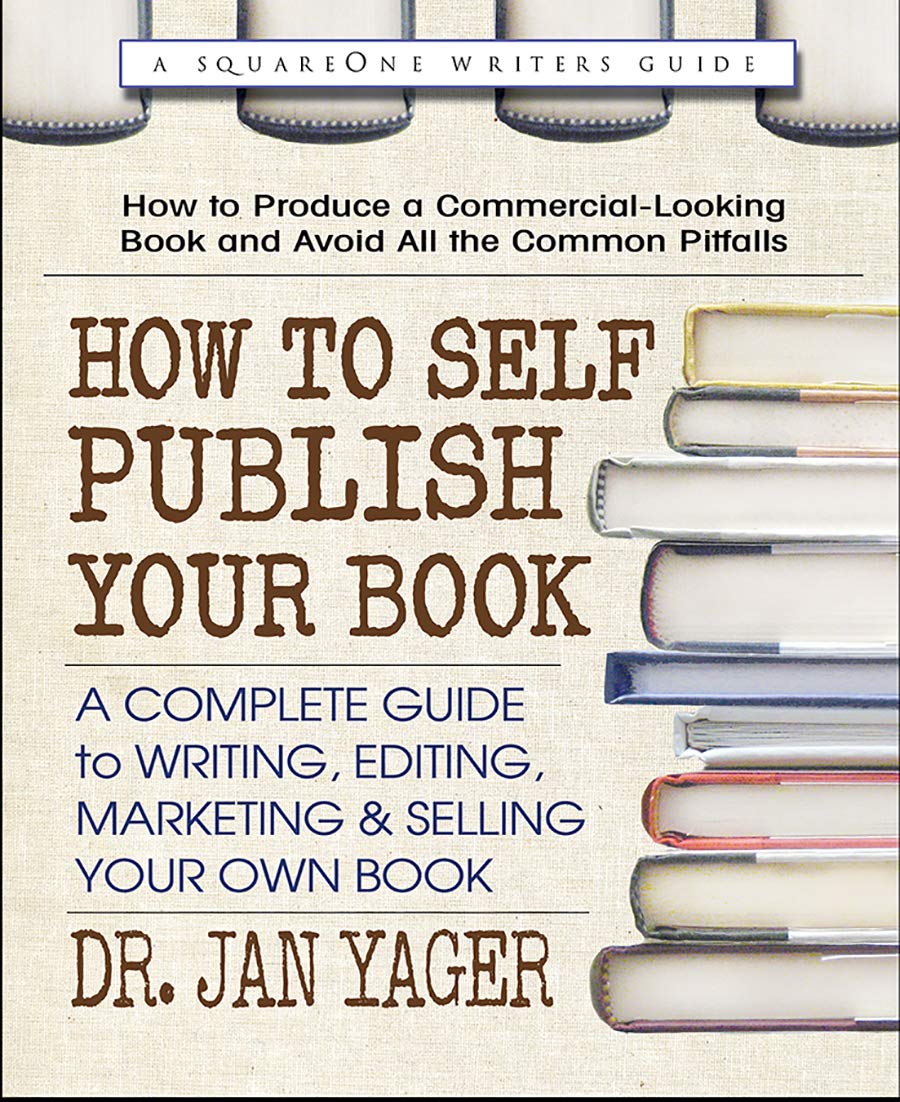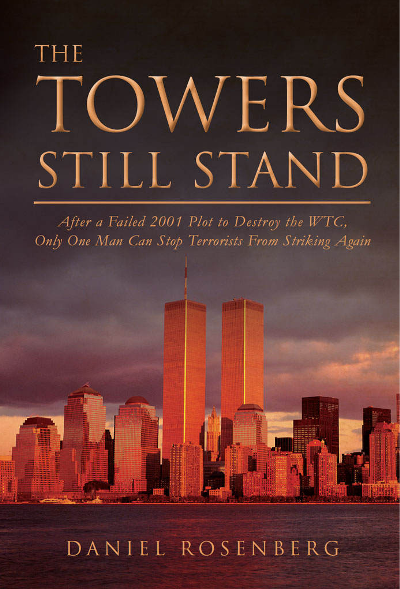Related
With self-publishing an increasingly common option for writers today, it would be hard to imagine a more useful and easy-to-follow guide than this comprehensive volume. Highly recommended to everyone hoping to self-publish a book that won’t look self-published.
Fans of alternative history will appreciate this concept of a New York where the World Trade Center buildings still stand
Whether she is tweeting her latest collection find, speaking to the New York Times about diversity in romance, presenting at professional conferences, or pushing libraries to purchase self-published (indie) books, collection development librarian Robin Bradford constantly campaigns for readers’ needs.
CALL FOR ENTRIES: We're celebrating the national expansion of the GonzoFest Literary Contest by inviting all public libraries, their independent authors, and writer communities to enter a single piece of literary nonfiction journalism in the tradition of the late Hunter S. Thompson.
Students returning to Pennsylvania State University (PSU) this fall will find four new short story dispensing kiosks installed at libraries across campus, along with a website for submitting their own original stories for distribution through the kiosks. Developed by Short Édition of Grenoble, France, the kiosks’ simple interface allows users to select a story that takes one, three, or five minutes to read. Their story is then printed out on a narrow piece of sustainably-sourced thermal paper the size of a large receipt.
LJ’s third annual Indie Ebook Awards are almost underway, and we’re looking for voracious readers to serve as judges. Volunteers will be asked to assess books in one of five categories: romance, sf, fantasy, mystery, or YA. This is an amazing opportunity to discover and support local authorship and reward self-published talent.
An engaging lead and atmospheric setting make for an ideal travel read. [See "Striking a Cord: SELF-esteem," 1/13/17.]
PREMIUM
Strum
Engrossing prose and an imaginative narrative define this gorgeous saga. [See "Striking a Cord: SELF-esteem," 1/13/17.]
Sometimes you don’t realize how things are interconnected because you aren’t seeing all parts of the process. That recently happened to me when I started asking catalogers about working with indie titles. The answers I got were surprising.
Everyone has a book in them, it’s said. While Christopher Hitchens completed that phrase with “in most cases that’s where it should stay,” it doesn’t seem the public agrees. This is dramatically demonstrated by the expansion of U.S. publishing, as measured by Bowker, the U.S. issuer of ISBNs, the numbers that help track book sales. In 2002, Bowker issued 247,777. In 2012 (the most recent figures available), demand rose to 2,352,797—an increase of 2,105,020, or a whopping 849.5 percent.
LJ is hosting its second Indie Ebook Awards, celebrating the best self-published titles in the following genres: romance, mystery, sf, fantasy, and YA.
A Computers in Libraries conference got Jim Blanton thinking: ebooks were on the rise. Self-publishing was taking off. How could libraries turn the challenge into an opportunity?
Librarians have long sought more guidance on self-published books as well as books by authors of color. Aiming to answer both needs is a new award offered by the Black Caucus of the American Library Association (BCALA) and BiblioBoard (the company that partners with LJ on SELF-e), called the SELF-e Literary Award.
The first SELF-e collection of self-published titles chosen by LJ and hosted by BiblioLab’s BiblioBoard releases this month, in time for the American Library Association’s (ALA) annual conference. On the occasion, LJ caught up with Mitchell Davis, chief business officer of BiblioLabs, to hear how this collaboration originated and where both SELF-e and BiblioBoard are headed.
This month, I visit with one of the first organizations to tackle one of the fundamental librarian concerns about self-publishing: quality.
SELF-e is the partnership between Library Journal and Charleston, SC's BiblioLabs. BiblioLab's product, Biblioboard, is a platform that seeks to bring (among other things), self-published works into the library ecosystem. I spoke recently with Hallie Rich, Cuyahoga County Public Library's Communications and External Relations Director, about the library's pilot project with the platform.
Serialized writing has a long history, and can be hugely popular. It is said that American fans of Charles Dickens, eager to get the latest chapter of "The Old Curiosity Shop," lined up at the docks of New York, shouting out to the crew of a ship that had not yet come to port, "Is little Nell dead?"
Over the past 30 years or so , there have been several waves of technological change in the library world. First was the replacement of the card-based catalog and circulation system with the integrated library system (ILS). Second was the replacement of paper journals with electronic databases. Third was the adoption of the PC. Fourth was the rise of the World Wide Web. Fifth was a sort of echo of the first, in which automation reached a little deeper into our processes, replacing manual checkin and checkout with RFID-based self-check and automated materials handling.
With the recent explosion of self-publishing and the relative ease with which one can become a published author, our library has been bombarded with requests by writers looking for us to host author talks and book events. The sad truth is, with rare exceptions, author visits can be a hard sell, requiring herculean PR efforts, even for established authors with respectable sales. Given the limited amount of program space at the library and the large number of high-demand programs, I can’t schedule events for every author who pitches me.
HarperCollins Christian Publishing (established when HarperCollins, longtime parent company of Zondervan, acquired competitor Thomas Nelson in 2012) is moving more strongly into the library market. Earlier this year, the company appointed Tracy Danz, a Zondervan veteran and former publisher of general trade nonfiction, to the newly created position of director, library sales and marketing. “We’re putting a focus on libraries we didn’t have before,” Danz told LJ.
According to a new analysis released in October by ProQuest affiliate Bowker, the ISBN agency, self-publishing continued its growth spurt, up 59 percent in 2012 over 2011, from 246,912 titles to 391,768. The gains were even more startling over the longer period for which Bowker collected data: a 422 percent rise since 2007.
The discussion of self-published titles in libraries has increased in recent years, in direct proportion to the angst surrounding ongoing ebook licensing negotiations with major traditional publishers. Prompted by the prospect of limited availability of popular titles or higher prices—probably both—librarians are understandably weighing alternatives that might satisfy readership demands. There are, however, very real barriers that must be overcome before self-publishing is likely to be even a small component of many collection efforts. Some barriers will fall away naturally as this growing market gains momentum and filters its way into downstream publishing markets like libraries, while others will require a more concerted advocacy effort to overcome.
Self-publishing via libraries is a hot topic these days. Califa is partnering with Smashwords to allow order cialis overnight its patrons to self-publish. A few public libraries have brought in Espresso Book Machines and seen the demand for self-publishing dwarf print-on-demand. Jamie LaRue and David Weinberger call on libraries to be a platform for self-published [...]
Pearson, parent company of Big Six publishing company Penguin, acquired self-publishing company Author Solutions Inc. (ASI) from private equity firm Bertram Capital for $116 million in cash. The five year old company is better known by its brand names iUniverse and Xlibris, under which it has published about 190,000 print and electronic books so far by about 150,000 authors. The company has grown at approximately 12 percent for the past three years; in 2011, it made about $100 million in revenues.
Bowker is projecting that traditional print book output grew six percent in 2011, from 328,259 titles in 2010 to a projected 347,178 in 2011, driven almost exclusively by a strong self-publishing market.
articles
ALREADY A SUBSCRIBER? LOG IN
We are currently offering this content for free. Sign up now to activate your personal profile, where you can save articles for future viewing


















